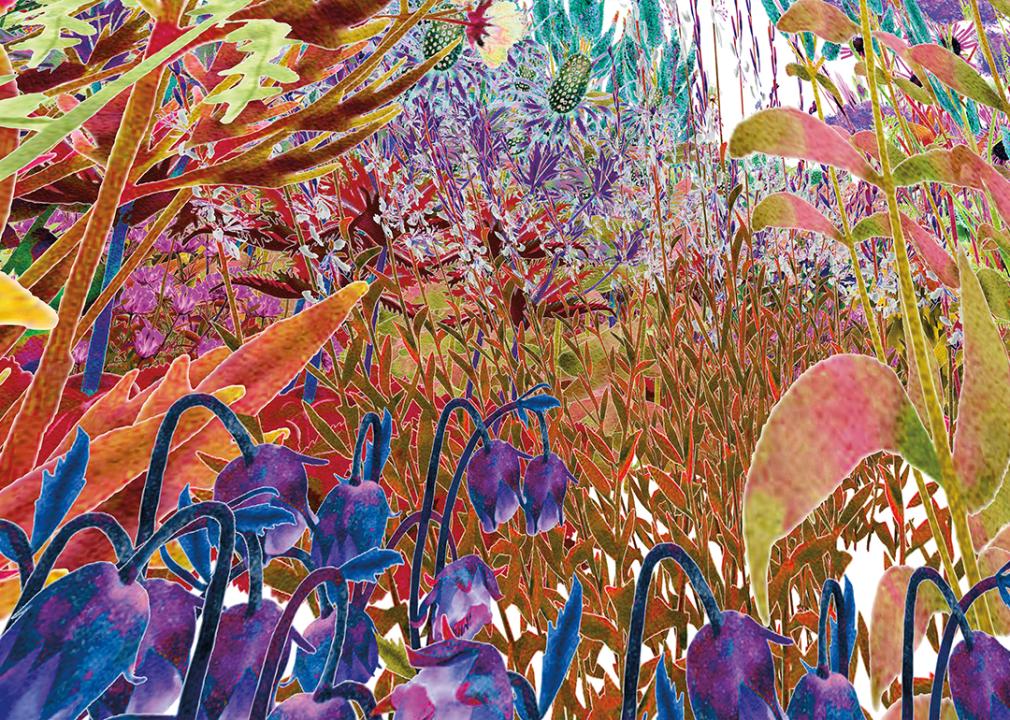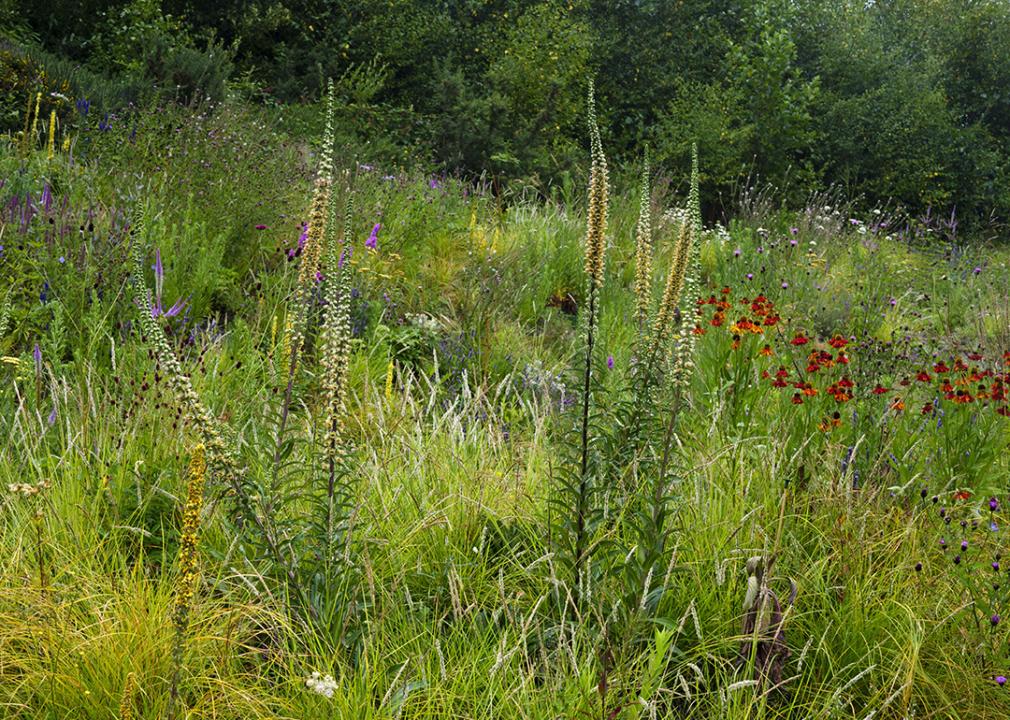
Imagine for a moment you could perceive the world like a bee. Bees have the fastest color vision in the animal world, about five times faster than humans', enabling them to navigate the world with extreme efficiency and speed. While humans might let their gaze wander over a flower field and appreciate the colors, bees perceive each individual flower as they zip by. Also, if you were a bee, you couldn't see red, but you would see ultraviolet light humans can't see, so you'd be able to detect ultraviolet flower colors. Bees actually have five eyes; three additional smaller eyes called ocelli help them navigate, a bee's version of GPS.
"The superpowers they have make me feel so inadequate," Alexandra Daisy Ginsberg tells Reasons to be Cheerful at her art studio at the Somerset House in London. "I can't see polarized light; I can't see the electric charge of flowers; I can't smell the scent plumes from fields of flowers in the distance. I can't memorize the locations of all the flowers I visited, and that's just a small list of my failings as a human."
Ginsberg's journey into researching how pollinators perceive the world started in the spring of 2020, when the British artist was asked to design a sculpture to raise awareness about pollinators. "Instead of making a sculpture about pollinators, I thought it would be better to make a sculpture for pollinators," she says, and points to studies that show a decline of 75% of pollinators over 27 years in Germany due to insecticides, pests, and climate change. The data from other countries is similar. "That led me to the question, what do pollinators like? What would they enjoy?" she explains.
The result was the first Pollinator Pathmaker Edition, a 180-foot-long permanent garden installation with 7,000 plants at the Eden Project, Cornwall, that opened as part of the Create a Buzz project in 2021. In 2022 Ginsberg added 11 meandering beds in Kensington Gardens, London, and in 2023, a garden in the front yard of the Natural History Museum in Berlin followed by 15 community gardens around Berlin.

The gardens are not designed to please humans but rather pollinators, including birds, bats, moths, wasps, and beetles. Working with scientists, horticulturalists, and Google, Ginsberg learned that each pollinator has specific needs, comes out at specific times and often needs a very specific plant to feed or lay eggs. Monarch butterflies need native milkweed, for instance, and bumblebees love Cynara cardunculus, a type of artichoke. Ginsberg developed the "altruistic algorithm" with string theory physicist Przemek Witaszcyk to support the maximum pollinator species possible, including endangered plants from a curated selection chosen solely for their benefits to pollinators.
As humans, we rarely question our perception of the world. But seeing the world from a bee's perspective might open our eyes to their significance. Without bees, we'd lose 87% of our crops, most flowers, and fruit. Bees are crucial for our survival. And yet, most of us never stop to consider how they navigate the world.
"It's crucial to highlight this very important concept that the world is not the same for everyone and the world that we see as humans is just one version," Ginsberg says. During the pandemic isolation, she took a deep dive into the science, finding out bees are even smart enough to master mathematical calculations and that bumblebees enjoy playing ball. Ginsberg was "amazed to discover some insects are equipped with 15-dimensional color perception," she says. "We cannot even imagine how the world looks to them. This opened up all these questions about consciousness, sentience, and species."
In addition to the big public gardens, Ginsberg's free DIY algorithm toolbox allows amateur gardeners to plug in their own yard conditions and turn their patch into living artwork as well. They can see 3D visualizations of their unique garden blooms on their screens. However, "it only becomes art once it is actually planted," Ginsberg says. She is wearing a black blouse with daisies, fitting for her name, and applied the algorithm to her own small garden outside of London as well. She originally studied architecture and then worked for 10 years with synthetic biologists, "essentially researching how humans can exploit nature, the opposite of the Pollinator Pathmaker."
Both the University of Exeter and the Natural History Museum are conducting studies, surveying the sites and comparing them with wildflower meadows and other gardens. The studies are not completed yet, but initial findings point to a significant increase in biodiversity in the Pollinator Pathmaker territory, including some species you wouldn't normally find in the middle of Berlin.
Ginsberg emphasizes that "an artwork is a proposition and a provocation rather than a solution, because it's not a solution to the biodiversity crisis. But it is exploring the idea of agency." She sees Pollinator Pathmaker as "a response to human-made ecological damage. By creating for other species, it uses art to give us empathy and agency to care for them."
So far, the algorithm only has databases for Europe, but Ginsberg is currently designing the first version for the U.S. Her vision is to "create the largest ever climate positive artwork together, by planting living artworks for pollinators around the world." This means adding new plant databases region by region as she gets funding. Ginsberg hopes her gardens will spread across the globe, eventually dotting the planet with pollinator playgrounds. A bee-lievable vision.
This story was produced by Reasons to be Cheerful and reviewed and distributed by Stacker Media.